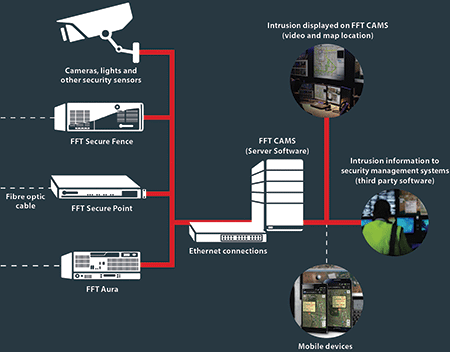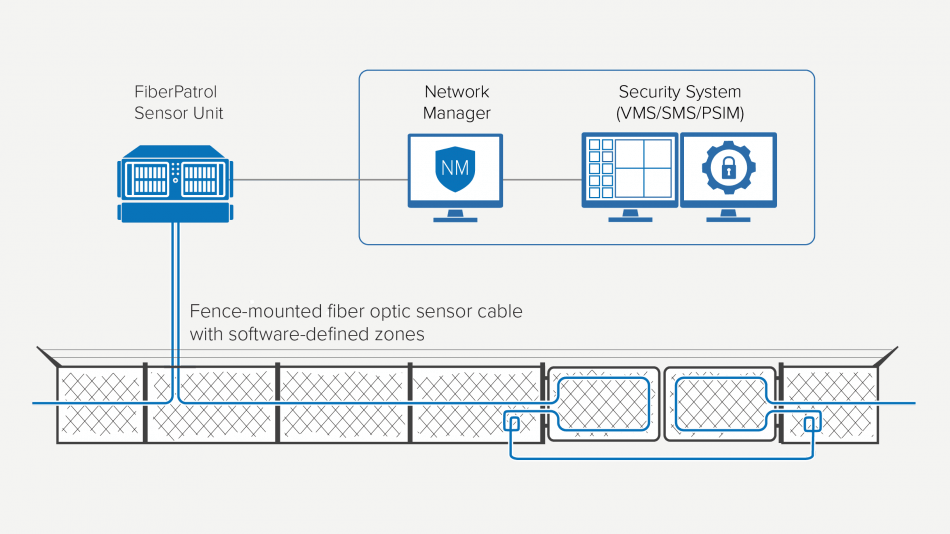Why a Fiber Security System Outperforms Traditional Security Systems
Enhance Your Security With Advanced Fiber Optic Safety Equipments
In an era where protection is paramount, sophisticated fiber optic protection systems provide a compelling service for boosting security across different environments. These systems not just boast remarkable bandwidth and speed for high-resolution security yet likewise provide amazing durability against external interferences. As organizations significantly seek trustworthy methods to secure their properties, the integration of innovative technologies like AI and IoT within fiber optic structures elevates essential questions about their performance contrasted to traditional systems. What implications do these innovations hold for future safety measures?
Advantages of Fiber Optic Safety
Using the advantages of fiber optic modern technology dramatically improves security systems throughout numerous applications. Among the primary advantages is the increased data transfer capacity, allowing for the transmission of big quantities of data at high speeds. This is especially crucial for real-time video clip monitoring, where high-resolution feeds can be sent out without latency, making sure instant reaction abilities.
Additionally, fiber optics exhibit premium resistance to electro-magnetic interference, which is essential in atmospheres with potential signal disturbances. This integrity ensures regular efficiency in essential security operations. In addition, fiber optic cords are less vulnerable to tapping and unauthorized access compared to conventional copper electrical wiring, consequently enhancing data honesty and privacy.
Another remarkable advantage is the sturdiness of fiber optic systems; they are more immune to ecological elements such as wetness, temperature fluctuations, and destructive materials. This resilience translates to lower maintenance expenses and longer life expectancies for security installations.
Lastly, the lightweight nature of fiber optic cables facilitates simpler installment and directing, especially in intricate infrastructures (fiber optic security system). Inevitably, the integration of fiber optic technology into security systems not only strengthens security measures yet additionally optimizes functional efficiency
Key Attributes to Think About
When evaluating fiber optic security systems, several vital features need to be thought about to make sure optimum efficiency and effectiveness. Initially, assess the system's discovery array and level of sensitivity; a comprehensive variety permits keeping track of large locations, while high level of sensitivity makes sure that also minor disruptions are identified immediately.
Following, consider the integration abilities of the system. A fiber optic security system should effortlessly user interface with existing safety procedures such as video cameras and alarm systems, developing a natural protection network.
Toughness and ecological resistance are also important functions. Make sure that the system is developed to hold up against extreme weather condition conditions and possible physical risks, as this will certainly prolong its functional life-span.

Lastly, look right into the scalability of the system. A robust fiber optic protection system need to be easily expandable to accommodate future demands without considerable overhauls. By meticulously taking into consideration these attributes, you can select a fiber optic safety and security option that boosts safety and safety in your setting.
Installment Refine Summary
To successfully execute a fiber optic security system, a methodical installment process is essential. This process begins with a detailed website assessment to establish the certain safety requirements and to identify optimum areas for fiber optic cords and safety gadgets. Following this assessment, the installation team will establish a thorough plan, consisting of cable television paths, essential devices, and conformity with local guidelines.
Following, the installment involves laying the fiber optic cords, guaranteeing they are shielded from basics environmental elements and physical damage. Appropriate handling techniques are vital, as fiber optic cords are delicate and can be conveniently harmed. After the cabling is set up, adapters and terminations are diligently finished to make sure signal honesty.
The subsequent phase includes setting up safety devices such as video cameras, activity detectors, and security system, all incorporated with the fiber optic network. Extensive screening is performed to validate that all parts are operating appropriately and to guarantee optimal efficiency.

Comparing Fiber Optic to Standard Systems
The advancement of safety technology has actually resulted in considerable developments in the contrast imp source in between fiber optic systems and traditional copper-based systems. Fiber optic systems make use of light to transmit data, supplying exceptional transmission capacity and speed contrasted to their copper equivalents. This leads to improved information transmission capacities, making fiber optics excellent for high-resolution video clip surveillance and real-time tracking.
Additionally, fiber optic cable televisions are resistant to electromagnetic interference, decreasing the chance of signal destruction caused by exterior aspects. This particular makes sure constant efficiency, also in difficult atmospheres. In contrast, conventional copper systems are a lot more susceptible to interference, bring about potential vulnerabilities in safety and security applications.
Resilience is another advantage of fiber optic systems. They are much less susceptible to damage from ecological aspects such as wetness and temperature level fluctuations, which can endanger copper wiring. Fiber optics are lighter and thinner, allowing for less complicated installation and lowered physical footprint.
However, typical systems tend to have lower preliminary prices, making them appealing for budget-conscious projects. While fiber optic systems may need a greater upfront financial investment, their lasting advantages-- such as reduced upkeep expenses and greater dependability-- commonly exceed the initial cost, placing them as a superior selection for modern safety and security demands.
Future Fads in Safety Modern Technology
Arising trends in safety modern technology are poised to transform the landscape of security and threat discovery - fiber moved here optic security system. As companies increasingly face advanced hazards, advancements such as expert system (AI) and equipment discovering (ML) are ending up being essential to security systems. These technologies improve the capacity of fiber optic systems by making it possible for real-time information evaluation, determining abnormalities, and automating responses to possible violations
In addition, the combination of the Internet of Things (IoT) is transforming safety and security structures. IoT gadgets can offer comprehensive situational understanding and promote smooth interaction between different safety and security parts. This interconnectedness permits extra efficient surveillance and faster occurrence reaction times.
Biometric authentication is also acquiring momentum, giving a higher degree of safety and security via one-of-a-kind physical features. As this technology progresses, it is most likely to be integrated right into fiber optic systems for improved accessibility control.
Verdict
In conclusion, advanced fiber optic protection systems stand for a significant advancement in safety and surveillance innovation. The change from conventional systems to fiber optic remedies mirrors a growing trend towards a lot more effective and efficient safety steps in an increasingly intricate technical landscape.